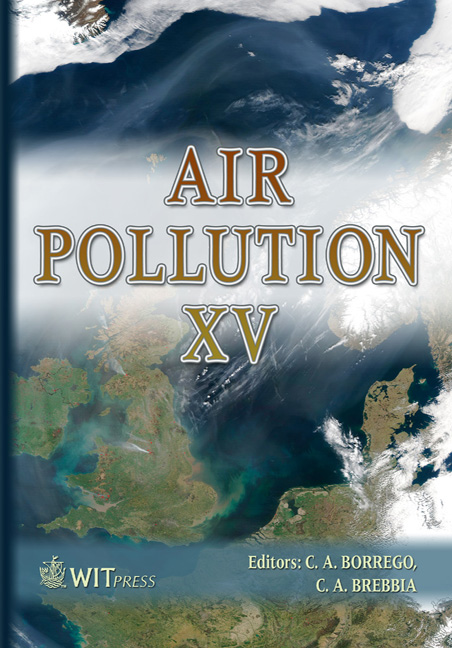Traffic Pollutant Emissions In Barreiro City
Price
Free (open access)
Transaction
Volume
101
Pages
10
Published
2007
Size
3,474 kb
Paper DOI
10.2495/AIR070311
Copyright
WIT Press
Author(s)
R. Cerdeira, C. Louro, L. Coelho, J. Garcia, C. Gouveia, P. J. Coelho & T. Bertrand
Abstract
Urban traffic is becoming a major problem, since most people use their own private car for all kind of trips, increasing the traffic congestion and atmospheric pollution. The purpose of this work was to study the atmospheric pollutants dispersion in Barreiro highway (IC21), in two specific situations, a traffic lights crossroad and a roundabout. The pollutants studied were traffic related pollutants, such as nitrogen oxides (NOx), particulate matter (PM) and CO (carbon monoxide). A traffic counting field campaign and particulate matter measurements were carried out in the light traffic crossroad and in the roundabout of the highway. Data from monitoring network stations was also collected. All this information was introduced in a dispersion model (ADMS-urban), to obtain a spatial simulation of the pollutants dispersion. Vehicle number, class and speed, fuel type, time of the day and urban street canyon were the traffic related parameters used by the model. Meteorological variables, such as wind speed and direction, relative humidity, temperature and heat flux were also taken into consideration to understand pollutant behaviour. The model results show the pollutants dispersion, on the IC21 highway, in two different meteorological scenarios: winter and summer. Winter seems to be the worst scenario for NOx and CO background concentrations, whereas PM tends to deposit due to rain, decreasing its concentration in this season. In summer, ozone (O3) concentration increases due to the photochemical reaction with some pollutants such as NOx. Analysing PM emissions, in the specific situations of light traffic crossroad and roundabout, on the IC21 highway, environmental advantages were found in the roundabout, despite its larger traffic flow, as it has a smaller PM concentration, even though it is above the legal limits. Keywords: urban traffic, atmospheric pollutants, urban environment.
Keywords
urban traffic, atmospheric pollutants, urban environment.





